A Review on Thermal Management and Heat Dissipation Strategies for 5G and 6G Base Stations: Challenges and Solutions
Abstract
1. Introduction
2. Major Factors Contributing to Energy Consumption in 5G Network Technologies
- Advanced antenna technologies can enhance network performance but will also lead to greater energy consumption [16]. Denser base station antenna infrastructures, such as the transition from 4–8 antennas to 64–128 antennas, will induce higher energy demands.
- The increasing demand for faster data transfer in 5G networks will require more advanced components and devices, thus inducing higher energy consumption [17,18]. As an example, one can mention the transition from homogeneous networks (comprising 1 to 3 base stations (BSs) per km2) to heterogeneous networks (comprising 10 to 100 nodes per km2). Furthermore, the growing need for larger storage capacities adds to energy requirements.
3. Energy-Efficiency Solutions and Technologies
- The dynamic power management (DPM) techniques that usually turn off the base stations during low-traffic periods, which can significantly reduce the overall energy consumption [21]. Figure 2 illustrates a power state machine representing a microprocessor with three power states: RUN, IDLE, and SLEEP [22]. CMOS technology induces more power consumption due to the dynamic electronic switching and the static electronic leakage components; here, the aim of DPM is to reduce static power consumption, whereas the aim of DVFS is to minimize dynamic power consumption [23].
- Energy-efficient hardware components—such as advanced power amplifiers [24], small cells [25], low-power modems [26], edge computing [27], processors [28], cooling systems [29,30], and AI-powered network management [31,32] (Figure 3)—can all significantly contribute to energy savings in 5G networks.
- Efficient spectrum management strategies can also reduce energy consumption by optimizing the usage of different resources [33,34]. For example, massive MIMO (multiple input–multiple output) technologies are vital for 5G and beyond (Figure 3); these employ a large number of antennas at a given base station. Within the same frequency band, this allows the station to serve multiple users. Thus, massive MIMO technologies can reduce energy consumption by adjusting the overall transmission power with optimal coverage [35].
- The dense deployment of base stations and interconnected equipment and devices is well-suited for integrating renewable energy sources [36,37], such as wind and solar energy sources; this is especially the case in regions where power grid extension is not feasible. Industries that corporate renewable energy sources into their 5G networks may importantly reduce their dependence on fossil fuels in addition to reducing their overall carbon footprints.
Energy Consumption: Future Directions and Challenges
4. Thermal Management of Heat Transfer in 5G Networks Technology
Thermal Management: Future Directions and Challenges
- Enhanced designs of future generations of antennas and electronic chips and components for reduced energy consumption.
5. Conclusions
Author Contributions
Funding
Informed Consent Statement
Data Availability Statement
Conflicts of Interest
References
- Sharma, P. Evolution of Mobile Wireless Communication Networks-1G to 5G as well as Future Prospective of Next Generation Communication Network. Int. J. Comput. Sci. Mob. Comput. 2013, 2, 47–53. [Google Scholar]
- Subedi, S.K. Fourth generation of mobile communication systems: Evolution, objectives, prospects and challenges. In Proceedings of the First Asian Himalayas International Conference on Internet, Kathmundu, Nepal, 3–5 November 2009; pp. 1–6. [Google Scholar] [CrossRef]
- Shen, J.; Zhang, Z.; Tang, H.; Du, Z.; Yang, N. 5G NR and Enhancements; Elsevier: Amsterdam, The Netherlands, 2022; ISBN 978-0-323-91060-6. [Google Scholar] [CrossRef]
- Jiang, W.; Han, B.; Habibi, M.A.; Schotten, H.D. The Road Towards 6G: A Comprehensive Survey. IEEE Open J. Commun. Soc. 2021, 2, 334–367. [Google Scholar] [CrossRef]
- Ordonez-Lucena, J.; Ameigeiras, P.; Lopez, D.; Ramos-Munoz, J.J.; Lorca, J.; Folgueira, J. Network slicing for 5G with sdn/nfv: Concepts, architectures, and challenges. IEEE Commun. Mag. 2017, 55, 80–87. [Google Scholar] [CrossRef]
- Chochliouros, I.P.; Kourtis, M.-A.; Spiliopoulou, A.S.; Lazaridis, P.; Zaharis, Z.; Zarakovitis, C.; Kourtis, A. Energy Efficiency Concerns and Trends in Future 5G Network Infrastructures. Energies 2021, 14, 5392. [Google Scholar] [CrossRef]
- Akbar, M.S.; Hussain, Z.; Ikram, M.; Sheng, Q.Z.; Mukhopadhyay, S.C. On challenges of sixth-generation (6G) wireless networks: A comprehensive survey of requirements, applications, and security. J. Netw. Comput. Appl. 2021, 233, 104040. [Google Scholar] [CrossRef]
- Odida, M.O. The Evolution of Mobile Communication: A Comprehensive Survey on 5G Technology. J. Sen. Net Data Commun. 2024, 4, 1–11. [Google Scholar]
- Shen, L.-H.; Feng, K.-T.; Hanzo, L. Facets of 6G: Research Challenges and Opportunities. arXiv 2022. [Google Scholar] [CrossRef]
- Wang, J.; Zhang, Q.; Yu, Y. An advanced control of hybrid cooling technology for telecommunication base stations. Energy Build. 2016, 133, 172–184. [Google Scholar] [CrossRef]
- Bikkasani, D.; Yerabolu, M. AI-Driven 5G Network Optimization: A Comprehensive Review of Resource Allocation, Traffic Management, and Dynamic Network Slicing. Am. J. Artif. Intell. 2024, 8, 55–62. [Google Scholar] [CrossRef]
- Singh, S. The Role of Artificial Intelligence in 5G Network Management: A Comprehensive Study. Int. J. Res. Publ. Rev. 2023, 4, 2862–2866. [Google Scholar] [CrossRef]
- Maiwada, U.D.; Danyaro, K.U.; Sarlan, A.; Liew, M.S.; Taiwo, A.; Audi, U.I. Energy efficiency in 5G systems: A systematic literature review. Int. J. Knowl. Based Intell. Eng. Syst. 2024, 28, 93–132. [Google Scholar] [CrossRef]
- Clari, F.; Fadil, E.; Pourcher, L. 5G and Energy Efficiency. In White Paper, The 5G Infrastructure Public Private Partnership (5G PPP) Report; European Union’s Horizon: Brussel, Belgium, 2020. [Google Scholar]
- Pihkola, H.; Hongisto, M.; Apilo, O.; Lasanen, M. Evaluating the Energy Consumption of Mobile Data Transfer—From Technology Development to Consumer Behaviour and Life Cycle Thinking. Sustainability 2018, 10, 2494. [Google Scholar] [CrossRef]
- Ubiali, G.A.; Abrão, T. XL-MIMO Energy-Efficient Antenna Selection under Non-Stationary Channels. arXiv 2020. [Google Scholar] [CrossRef]
- Marwaha, S.; Jorswieck, E.A.; Jassim, M.S.; Kuerner, T.; Pérez, D.L.; Geng, X.; Bao, H. Energy Efficient Operation of Adaptive Massive MIMO 5G HetNets. IEEE Trans. Wirel. Commun. 2023, 23, 6889–6904. [Google Scholar] [CrossRef]
- Salh, A.; Audah, L.; Shah, N.S.; Abdullah, Q.; Abdullah, N.; Mukred, J.; Hamzah, S.A. Optimal transmit power and antenna selection to achieve energy-efficient and low-complexity in 5G massive MIMO systems. In Proceedings of the 5th International Conference on Bioscience and Biotechnology, Johor, Malaysia, 6–7 September 2021. [Google Scholar]
- Ancans, G.; Bobrovs, V.; Ivanovs, G. Spectrum usage in mobile broadband communication systems. Latv. J. Phys. Tech. Sci. 2013, 50, 49–58. [Google Scholar]
- Shimodaira, H.; Tran, G.K.; Sakaguchi, K.; Araki, K. Investigation on Millimeter-wave Spectrum for 5G. In Proceedings of the IEEE Conference on Standards for Communications and Networking (CSCN), Tokyo, Japan, 28–30 October 2015; pp. 143–148. [Google Scholar]
- Das, A.; Walker, M.J.; Hansson, A.; Al-Hashimi, B.M.; Merrett, G.V. Hardwaresoftware interaction for run-time power optimization: A case study of embedded Linux on multicore smartphones. In Proceedings of the IEEE/ACM International Symposium on Low Power Electronics and Design, ISLPED, IEEE, Rome, Italy, 22–24 July 2015; pp. 165–170. [Google Scholar]
- Cardoso, J.M.P.; Coutinho, J.G.F.; Diniz, P.C. Embedded Computing for High Performance; Elsevier: Amsterdam, The Netherlands, 2017; ISBN 978-0-12-804189-5. [Google Scholar]
- Bambagini, M.; Marinoni, M.; Aydin, H.; Buttazzo, G. Energy-aware scheduling for real-time systems: A survey. ACM Trans. Embedded Comput. Syst. (TECS) 2016, 15, 7. [Google Scholar] [CrossRef]
- Bala, E.; Kazakevich, L.; Yang, R. Techniques to improve power amplifier energy efficiency for 5G. In Proceedings of the 1st International Conference on 5G for Ubiquitous Connectivity, Akaslompolo, Finland, 26–27 November 2014; pp. 104–109. [Google Scholar] [CrossRef]
- Ge, X.; Yang, J.; Gharavi, H.; Sun, Y. Energy Efficiency Challenges of 5G Small Cell Networks. IEEE Commun. Mag. 2017, 55, 184–191. [Google Scholar] [CrossRef]
- Chen, Y.; Guey, J.C.; Hwang, C.; Liao, P.; Sébire, G.; Wu, W.; Yang, W. 5G Modem Design Challenges. In 5G Technology: 3GPP Evolution to 5G-Advanced; Wiley: Hoboken, NJ, USA, 2024; pp. 399–429. [Google Scholar] [CrossRef]
- Hassan, N.; Yau, K.-L.A.; Wu, C. Edge Computing in 5G: A Review. IEEE Access 2019, 7, 127276–127289. [Google Scholar] [CrossRef]
- Sy, M. Optimization Strategies for Low-Latency 5G NR LDPC Decoding on General Purpose Processor. In Proceedings of the International Conference on Control, Communication and Computing (ICCC), Thiruvananthapuram, India, 19–21 May 2023; pp. 1–6. [Google Scholar] [CrossRef]
- Steinberg, D.S. Cooling Techniques for Electronic Equipment; Wiley Interscience: Hoboken, NJ, USA, 1991. [Google Scholar]
- Guo, Y.; Zhang, X.; Lan, D.; Zhu, Y. Research on Heat Dissipation Performance and Long-term Reliability of the Flapping Wing Cooling Technology Applied to the 5G Communications Equipment. In Proceedings of the 27th International Workshop on Thermal Investigations of ICs and Systems (THERMINIC), Berlin, Germany, 23 September 2021; pp. 1–6. [Google Scholar] [CrossRef]
- Rentapalli, V.R.; Roy, B. Artificial Intelligence Enhanced Signal Processing in Low-Profile Wearable Wideband Antenna for Future 5G Wireless communications. In Proceedings of the 3rd International Conference on Artificial Intelligence and Signal Processing (AISP), Vijayawada, India, 18–20 March 2023; pp. 1–5. [Google Scholar] [CrossRef]
- Ezzeddine, Z.; Khalil, A.; Zeddini, B.; Ouslimani, H.H. A Survey on Green Enablers: A Study on the Energy Efficiency of AI-Based 5G Networks. Sensors 2024, 24, 4609. [Google Scholar] [CrossRef]
- Temesvári, Z. Review of Frequency Spectrum and Energy Consumption in 5G. In Proceedings of the International IEEE Conference and Workshop in Óbuda on Electrical and Power Engineering (CANDO-EPE), Budapest, Hungary, 20–21 November 2019; pp. 21–26. [Google Scholar] [CrossRef]
- Poornachandu, C.V.; Ayyadurai, M. Hybrid Unequal Energy Efficient Clustering for Device to Device Network in 5G Compared with Collaborative Proactive Routing Protocol. In Proceedings of the 3rd International Conference on Intelligent Engineering and Management (ICIEM), London, UK, 27–29 April 2022; pp. 344–350. [Google Scholar] [CrossRef]
- Yang, B.; Yu, Z.; Lan, J.; Zhang, R.; Zhou, J.; Hong, W. Digital beamforming-based massive MIMO transceiver for 5G millimeter-wave communications. IEEE Trans. Microw. Theory Tech. 2018, 66, 3403–3418. [Google Scholar] [CrossRef]
- Lund, H. Renewable Energy Systems: A Smart Energy Systems Approach to the Choice and Modeling of 100% Renewable Solutions, 2nd ed.; Academic Press: Cambridge, MA, USA, 2022; ISBN 978-0124104235. [Google Scholar]
- Israr, A.; Yang, Q.; Li, W.; Zomaya, A.Y. Renewable energy powered sustainable 5G network infrastructure: Opportunities, challenges and perspectives. J. Netw. Comput. Appl. 2021, 175, 102910. [Google Scholar] [CrossRef]
- Kamal, M.A.; Raza, H.W.; Alam, M.M.; Su’ud, M.M.; Sajak, A. Resource Allocation Schemes for 5G Network: A Systematic Review. Sensors 2021, 21, 6588. [Google Scholar] [CrossRef] [PubMed]
- Shuvo, S.A.; Munna, A.R.; Sarker, S.; Adhikary, T.; Razzaque, A.; Hassan, M.M.; Aloi, G.; Fortino, G. Energy-efficient scheduling of small cells in 5G: A meta-heuristic approach. J. Netw. Comput. Appl. 2021, 178, 102986. [Google Scholar] [CrossRef]
- Antonopoulos, A.; Kartsakli, E.; Bousia, A.; Alonso, L.; Verikoukis, C. Energy efficient infrastructure sharing in multi-operator mobile networks. IEEE Commun. Mag. 2015, 53, 242–244. [Google Scholar] [CrossRef]
- Udo, E.U.; Oborkhale, L.I.; Nwaogu, C.C. Analysis and evaluation of energy efficiency of 5G networks in wireless communication. Arid. Zone J. Eng. Technol. Environ. 2023, 19, 175–182. [Google Scholar]
- Deruyck, M.; Joseph, W.; Martens, L. Power consumption model for macrocell and microcell base stations. Trans. Emerg. Telecommun. Technol. 2014, 25, 320–333. [Google Scholar] [CrossRef]
- Faruk, N.; Ayeni, A.A.; Muhammad, M.Y. Powering cell sites for mobile cellular systems using solar power. Int. J. Eng. Technol. 2012, 2, 396–401. [Google Scholar]
- Aloupogianni, E.; Karyotis, C.; Maniak, T.; Iqbal, R.; Passas, N.; Doctor, F.; Vujicic, Z. AI-Driven Optimization of Small Cell Deployment for Beyond 5G Networks. Procedia Comput. Sci. 2024, 238, 908–913. [Google Scholar] [CrossRef]
- Cai, Z.; Tang, Y.; Guo, W.; Chen, T.; Zheng, H.; Qin, T. Energy Management Strategy for Distributed Photovoltaic 5G Base Station DC Microgrid Integrated with the CF-P&O-INC MPPT Algorithm. Energies 2024, 17, 3258. [Google Scholar] [CrossRef]
- Cabrera-Tobar, A.; Grimaccia, F.; Leva, S. Energy Resilience in Telecommunication Networks: A Comprehensive Review of Strategies and Challenges. Energies 2023, 16, 6633. [Google Scholar] [CrossRef]
- Yang, W.; Yang, L.; Ou, J.; Lin, Z.; Zhao, X. Investigation of Heat Management in High Thermal Density Communication Cabinet by a Rear Door Liquid Cooling System. Energies 2019, 12, 4385. [Google Scholar] [CrossRef]
- Jobby, A.; Khatamifar, M.; Lin, W. Alternative Internal Configurations for Enhancing Heat Transfer in Telecommunication Cabinets. Energies 2023, 16, 3505. [Google Scholar] [CrossRef]
- Wang, W.; Zhao, J.; Qu, H.; Dai, H. Joint Optimization Algorithm for Small Base Station States Control and User Association in Wireless Caching Networks. Appl. Sci. 2022, 12, 12372. [Google Scholar] [CrossRef]
- El Amine, A.; Chaiban, J.P.; Hassan, H.A.H.; Dini, P.; Nuaymi, L.; Achkar, R. Energy Optimization with Multi-Sleeping Control in 5G Heterogeneous Networks Using Reinforcement Learning. IEEE Trans. Netw. Serv. Manag. 2022, 19, 4310–4322. [Google Scholar] [CrossRef]
- McCune, E. Fundamentals for Energy-Efficient Massive MIMO. In Proceedings of the 2017 IEEE Wireless Communications and Networking Conference Workshops (WCNCW), San Francisco, CA, USA, 19–22 March 2017; pp. 1–6. [Google Scholar]
- Guo, A.; Del Alamo, J.A. Unified Mechanism for Positive-A nd Negative-Bias Temperature Instability in GaN MOSFETs. IEEE Trans. Electron. Devices 2017, 64, 2142–2147. [Google Scholar] [CrossRef]
- Yu, Z.; Wang, R.; Hao, P.; Guo, S.; Ren, P.; Huang, R. Non-Universal Temperature Dependence of Hot Carrier Degradation (HCD) in FinFET: New Observations and Physical Understandings. In Proceedings of the 2018 IEEE Electron Devices Technology and Manufacturing Conference, EDTM 2018-Proceedings, Kobe, Japan, 13–16 March 2018; Institute of Electrical and Electronics Engineers Inc.: Manhattan, NY, USA, 2018; pp. 34–36. [Google Scholar]
- Bury, E.; Chasin, A.; Kaczer, B.; Chuang, K.H.; Franco, J.; Simicic, M.; Weckx, P.; Linten, D. Self-heating-aware CMOS reliability characterization using degradation maps. In Proceedings of the IEEE International Reliability Physics Symposium Proceedings, Burlingame, CA, USA, 11–15 March 2018; Institute of Electrical and Electronics Engineers Inc.: Manhattan, NY, USA, 2018; pp. 2A.31–2A.36. [Google Scholar]
- Smoyer, J.L.; Norris, P.M. Brief Historical Perspective in Thermal Management and the Shift Toward Management at the Nanoscale. Heat Transf. Eng. 2019, 40, 269–282. [Google Scholar] [CrossRef]
- Mahadevan, B.K.; Naghibi, S.; Kargar, F.; Balandin, A.A. Non-Curing Thermal Interface Materials with Graphene Fillers for Thermal Management of Concentrated Photovoltaic Solar Cells. C. J. Carbon Res. 2019, 6, 2. [Google Scholar] [CrossRef]
- Saadah, M.; Hernandez, E.; Balandin, A. Thermal Management of Concentrated Multi-Junction Solar Cells with Graphene-Enhanced Thermal Interface Materials. Appl. Sci. 2017, 7, 589. [Google Scholar] [CrossRef]
- Prestage, R.M.; Constantikes, K.T.; Hunter, T.R.; Lee, J.K.; Lacasse, R.J.; Lockman, F.J.; Norrod, R.D. The Green Bank Telescope. Proc. IEEE 2009, 97, 1382–1390. [Google Scholar] [CrossRef]
- Weinreb, S.; Bardin, J.; Mani, H.; Jones, G. Matched wideband low-noise amplifiers for radio astronomy. Rev. Sci. Instrum. 2009, 80, 18–22. [Google Scholar] [CrossRef]
- Warnick, K.F.; Maaskant, R.; Ivashina, M.V.; Davidson, D.B.; Jeffs, B.D. High-Sensitivity Phased Array Receivers for Radio Astronomy. Proc. IEEE 2016, 104, 607–622. [Google Scholar] [CrossRef]
- Willemsen, B.A. Practical cryogenic receiver front ends for commercial wireless applications. In Proceedings of the IEEE MTT-S International Microwave Symposium Digest, Boston, MA, USA, 7–12 June 2009; pp. 1457–1460. [Google Scholar]
- Narahashi, S.; Satoh, K.; Kawai, K.; Koizumi, D. Cryogenic Receiver Front-End for Mobile Base Stations. In Proceedings of the 2008 China-Japan Joint Microwave Conference, Shanghai, China, 10–12 September 2008; pp. 619–622. [Google Scholar]
- Nojima, T.; Narahashi, S.; Mimura, T.; Satoh, K.; Suzuki, Y. 2-GHz Band Cryogenic Receiver Front End for Mobile Communication Base Station Systems. IEICE Trans. Commun. 2000, 83, 1834–1843. [Google Scholar]
- Knack, A.; Mazierska, J.; Piel, H. Superconducting Technology: Development of a CDMA Base Station Cryogenic Front End Receiver. In Proceedings of the Asia-Pacific Microwave Conference, Bangkok, Thailand, 11–14 December 2007; pp. 1–4. [Google Scholar]
- Mazierska, J.; Gileppa, J. Investigation into Improving Coverage and Capacity of CDMA Wireless Base Stations with CRFE in Rural Environment. In Proceedings of the Asia-Pacific Microwave Conference, Yokohama, Japan, 7–10 December 2010; pp. 211–214. [Google Scholar]
- Superconductor Technologies Inc. SuperLink—700 LTE Product Preview; Technical report for Superconductor Technologies; Superconductor Technologies Inc.: Austin, TX, USA, 2010. [Google Scholar]
- Aslan, Y.; Puskely, J.; Roederer, A.; Yarovoy, A. Heat Transfer Enhancement in Passively Cooled 5G Base Station Antennas Using Thick Ground Planes. In Proceedings of the 13th European Conference on Antennas and Propagation (EuCAP), Krakow, Poland, 31 March–5 April 2019; pp. 1–5. [Google Scholar]
- Zhang, D.; Ding, B.; Zhu, C.; Gong, L. Enhancement of Natural Convection for Cooling Active Antenna Unit Device in 5G Base Station. J. Therm. Sci. 2022, 31, 1551–1564. [Google Scholar] [CrossRef]
- Dinh Bui Minh, V.D.Q. Optimal calculation of Plate Fin Heat Sinks for RRU LTE 4G. Meas. Control. Autom. 2020, 1, 1–5. [Google Scholar]
- Aslan, Y.; Puskely, J.; Yarovoy, A. Heat source layout optimization for two-dimensional heat conduction using iterative reweighted L1-norm convex minimization. Int. J. Heat Mass Transf. 2018, 122, 432–441. [Google Scholar] [CrossRef]
- Agiwal, M.; Kwon, H.; Park, S.; Jin, H. A Survey on 4G–5G Dual Connectivity: Road to 5G Implementation. IEEE Access 2021, 9, 16193–16210. [Google Scholar] [CrossRef]
- Huang, Z.; Xie, N.; Zheng, X.; Gao, X.; Fang, X.; Fang, Y.; Zhang, Z. Experimental and numerical study on thermal performance of Wood’s alloy/expanded graphite composite phase change material for temperature control of electronic devices. Int. J. Therm. Sci. 2019, 135, 375–385. [Google Scholar] [CrossRef]
- Kothari, R.; Sahu, S.K.; Kundalwal, S.I.; Mahalkar, P. Thermal performance of phase change material–based heat sink for passive cooling of electronic components: An experimental study. Int. J. Energy Res. 2021, 45, 5939–5963. [Google Scholar] [CrossRef]
- Fok, S.C.; Shen, W.; Tan, F.L. Cooling of portable hand-held electronic devices using phase change materials in finned heat sinks. Int. J. Therm. Sci. 2010, 49, 109–117. [Google Scholar] [CrossRef]
- Gharbi, S.; Harmand, S.; Jabrallah, S.B. Experimental comparison between different configurations of PCM based heat sinks for cooling electronic components. Appl. Therm. Eng. 2015, 87, 454–462. [Google Scholar] [CrossRef]
- Senthilkumar, S.; Ramasubramanian, B.; Sundarrajan, S.; Ramakrishna, S. Trends in sustainable materials for passive thermal management in 5G enabled portable electronics. Appl. Nanosci. 2024, 14, 543–557. [Google Scholar] [CrossRef]
- Aslan, Y.; Kiper, C.E.; Johannes van den Biggelaar, A.; Johannsen, U.; Yarovoy, A. Passive Cooling of mm-Wave Active Integrated 5G Base Station Antennas Using CPU Heatsinks. In Proceedings of the 2019 16th European Radar Conference (EuRAD), Paris, France, 2–4 October 2019; pp. 121–124. [Google Scholar]
- Aslan, Y.; Puskely, J.; Janssen, J.H.J.; Geurts, M.; Roederer, A.; Yarovoy, A. Thermal-Aware Synthesis of 5G Base Station Antenna Arrays: An Overview and a Sparsity-Based Approach. IEEE Access 2018, 6, 58868–58882. [Google Scholar] [CrossRef]
- Lu, T.; Vähä-Savo, L.; Lü, X.; Haneda, K. Thermal Impact of 5G Antenna Systems in Sandwich Walls. Energies 2023, 16, 2657. [Google Scholar] [CrossRef]
- Khosravi, A.; Laukkanen, T.; Saari, K.; Vuorinen, V. An artificial intelligence based-model for heat transfer modeling of 5G smart poles. Case Stud. Therm. Eng. 2021, 28, 101613. [Google Scholar] [CrossRef]
- Zhang, D.-X.; Zhu, C.-Y.; Li, K.; Duan, X.-Y.; Gong, L.; Ding, B.; Xu, M.-H. Design and the transient thermal control performance analysis of a novel PCM-based active-passive cooling heat sink. Appl. Therm. Eng. 2022, 220, 119525. [Google Scholar] [CrossRef]
- Lewis, J.S. Reduction of Device Operating Temperatures with Graphene-Filled Thermal Interface Materials. C 2021, 7, 53. [Google Scholar] [CrossRef]
- Liu, Y.; Xu, Z.; Wu, J.; Wei, D.; Guan, X. Coordinated Optimization for Energy Efficient Thermal Management of 5G Base Station Site. IFAC Pap. OnLine 2022, 55, 102–107. [Google Scholar] [CrossRef]
- Liu, L.; Wu, J.; Liu, Y.; Xu, Z.; Guan, X. Energy Efficient Thermal Management of 5G Base Station Site Based on Reinforcement Learning. In Proceedings of the IEEE Sustainable Power and Energy Conference (iSPEC), Chongqing, China, 28–30 November 2023; pp. 1–6. [Google Scholar] [CrossRef]
- Luo, J.-W.; Yaji, K.; Chen, L.; Tao, W.-Q. Data-driven multifidelity topology design for enhancing turbulent natural convection cooling. Int. J. Heat Mass Transf. 2025, 240, 126659. [Google Scholar] [CrossRef]
- Deng, L.; Li, Y.; Xin, Z.; Chen, Z.; Zhou, W.; Al-Mamun, A.; Li, B. Thermal study of the natural air cooling using roll bond flat heat pipe as plate fin under multi-heat source condition. Int. J. Therm. Sci. 2025, 183, 107834. [Google Scholar] [CrossRef]
- Meng, F.; Zhang, Q.; Zou, S.; Zhu, X.; Liu, L.; Chen, S. Operating parameters optimization of a thermosyphon and compressor system used in 5G TBS. Appl. Therm. Eng. 2024, 241, 122331. [Google Scholar] [CrossRef]
- Yi, F.; Gan, Y.; Liu, R.; Liu, F.; Li, Y. Experimental investigation on the heat transfer performance of a microchannel thermosiphon array for 5G telecommunication base stations. Appl. Therm. Eng. 2024, 242, 122561. [Google Scholar] [CrossRef]
- Nortershauser, D.; Le Masson, S.; Volkov, T.; Galkin, T.; Amper, O.; Huttunen, J. Experimental liquid cooled base station. In Proceedings of the 2016 IEEE International Telecommunications Energy Conference (INTELEC), Austin, TX, USA, 23–27 October 2016; pp. 1–7. [Google Scholar]
- Huttunen, J.; Salmela, O.; Volkov, T.; Pongrácz, E. Reducing the Cooling Energy Consumption of Telecom Sites by Liquid Cooling. Proceedings 2020, 58, 19. [Google Scholar] [CrossRef]
- Markiewicz, T.G.; Wesołowski, K.W. Cryogenic Cooling in Wireless Communications. Entropy 2019, 21, 832. [Google Scholar] [CrossRef]
- Dbouk, T. Heat transfer and shear-induced migration in dense non-Brownian suspension flows: Modelling and simulation. J. Fluid Mech. 2018, 840, 432–454. [Google Scholar] [CrossRef]
- Dbouk, T. A new technology for CPU chip cooling by concentrated suspension flow of non-colloidal particles. Appl. Therm. Eng. 2019, 146, 664–673. [Google Scholar] [CrossRef]
- Mahabaleshwar, U.S.; Nihaal, K.M.; Zeidan, D.; Dbouk, T.; Laroze, D. Computational and artificial neural network study on ternary nanofluid flow with heat and mass transfer with magnetohydrodynamics and mass transpiration. Neural Comput. Applic. 2024, 36, 20927–20947. [Google Scholar] [CrossRef]
- Dbouk, T.; Habchi, C.; Harion, J.-L.; Drikakis, D. Heat transfer and mixing enhancement by Poiseuille-Taylor-Couette flow between two rotating elliptically-deformed annular tubes. Int. J. Heat Fluid Flow 2022, 96, 109011. [Google Scholar] [CrossRef]
- Subramaniam, V.; Dbouk, T.; Harion, J.-L. Topology optimization of conductive heat transfer devices: An experimental investigation. Appl. Therm. Eng. 2018, 131, 390–411. [Google Scholar] [CrossRef]
- Subramaniam, V.; Dbouk, T.; Harion, J.-L. Topology optimization of conjugate heat transfer systems: A competition between heat transfer enhancement and pressure drop reduction. Int. J. Heat Fluid Flow 2019, 75, 165–184. [Google Scholar] [CrossRef]
- Yang, C.; Wang, D.; Ali, S.; Wang, G.; Dbouk, T. Topology optimization of rectangular parallel plate heat exchanger unit. Int. J. Therm. Sci. 2025, 208, 109503. [Google Scholar] [CrossRef]
- Wang, D.; Yang, C.; Wang, G.; Li, Y.; Dbouk, T. Innovative Designs of 3D Heat Sinks by Topology Optimization. ASME J. Mech. Des. 2025, 147, 081705. [Google Scholar] [CrossRef]
- Karkaba, H.; Dbouk, T.; Habchi, C.; Russeil, S.; Lemenand, T.; Bougeard, D. Multiobjective optimization of Vortex Generators for heat transfer enhancement in turbulent flows. Int. J. Thermofluids 2024, 22, 100633. [Google Scholar] [CrossRef]
- Ali, S.; Dbouk, T.; Khaled, M.; Faraj, J.; Drikakis, D. Morphing optimization of flow and heat transfer in concentric tube heat exchangers. Phys. Fluids 2023, 35, 095127. [Google Scholar] [CrossRef]
- He, W.; Zhu, Y.; Liu, Z.; Ying, Z.; Zu, W. Active Thermal Management Method for Improving Current Capability of Power Devices under Influence of Random Convection. Energies 2024, 17, 3249. [Google Scholar] [CrossRef]
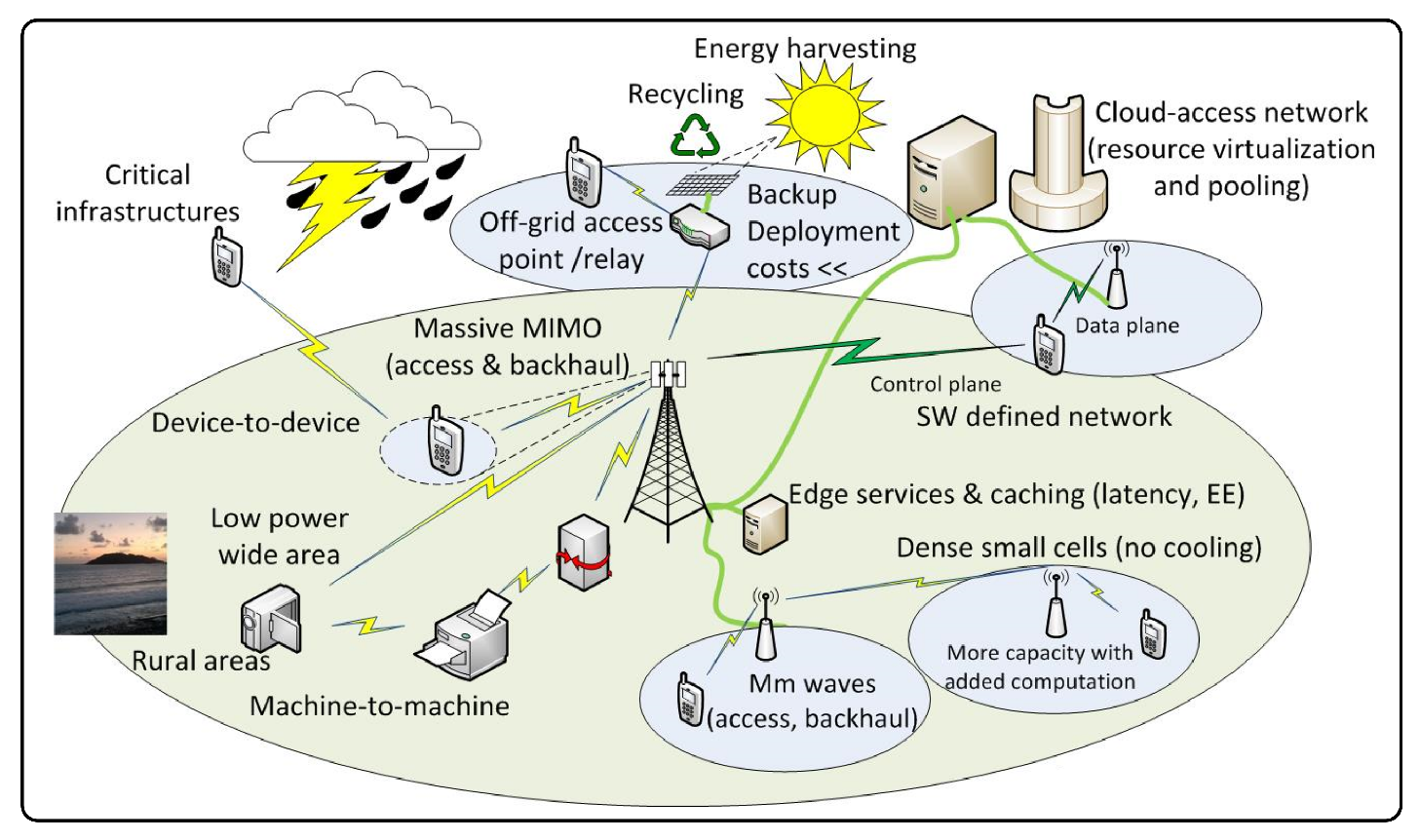
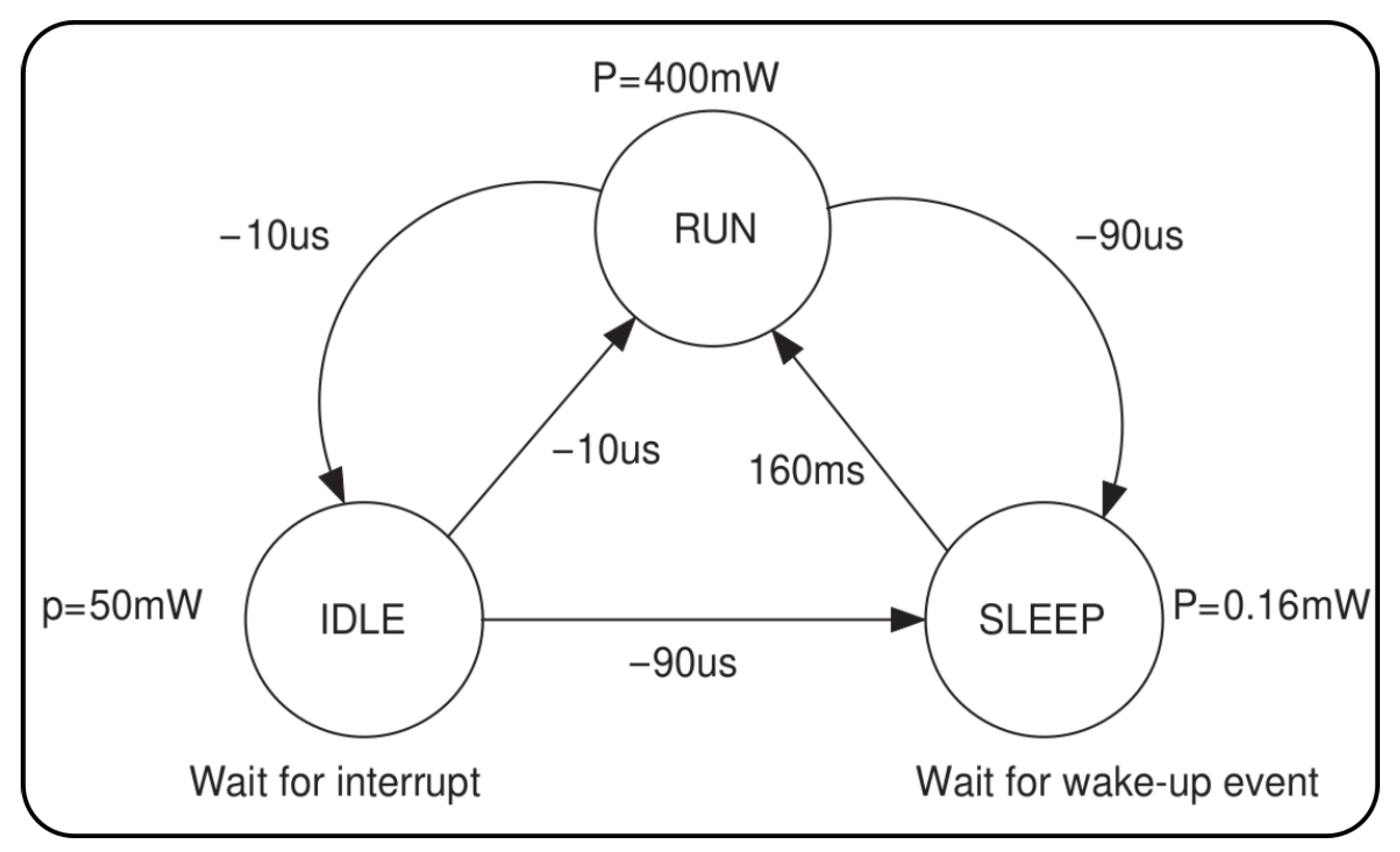

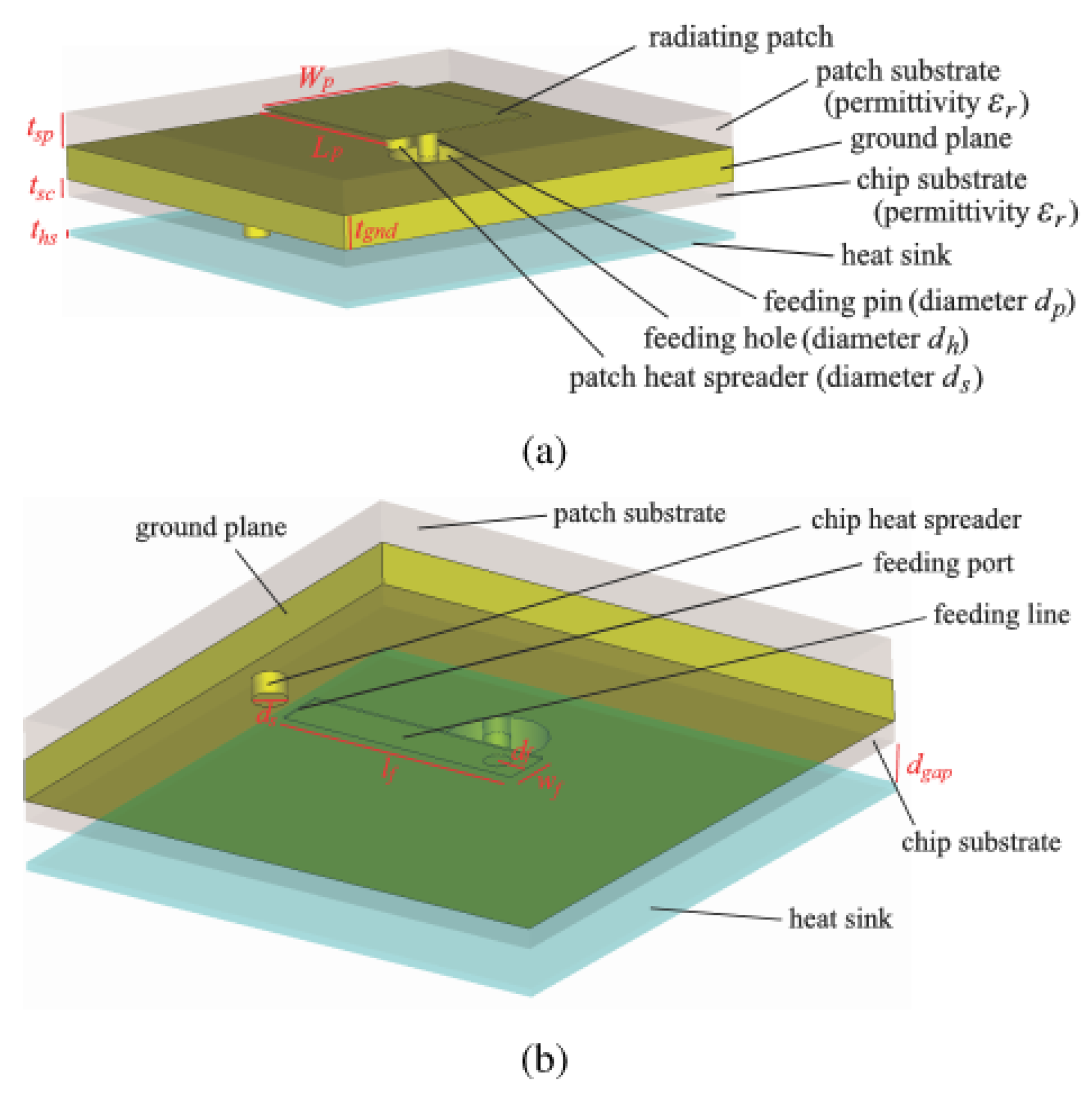



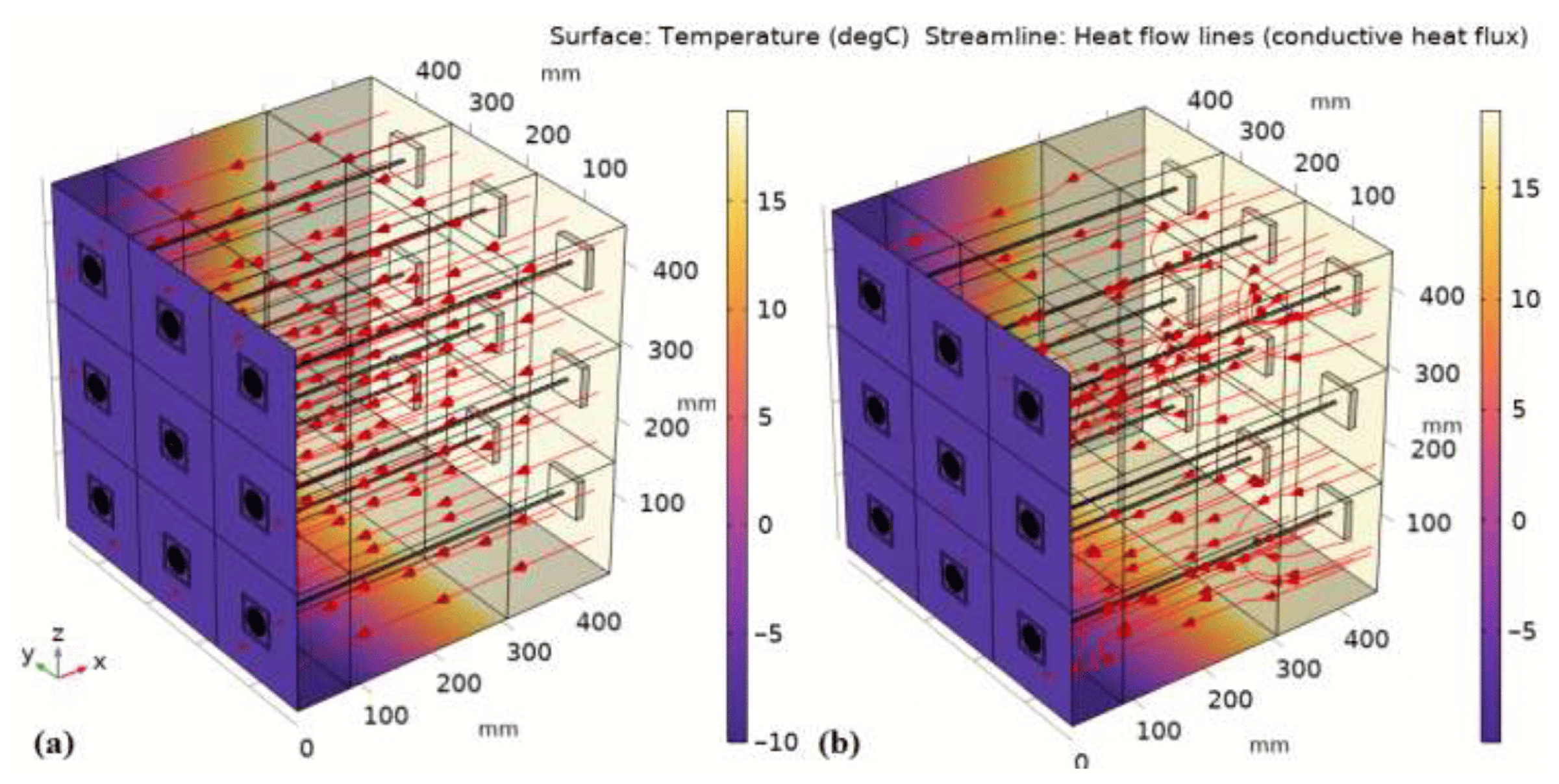
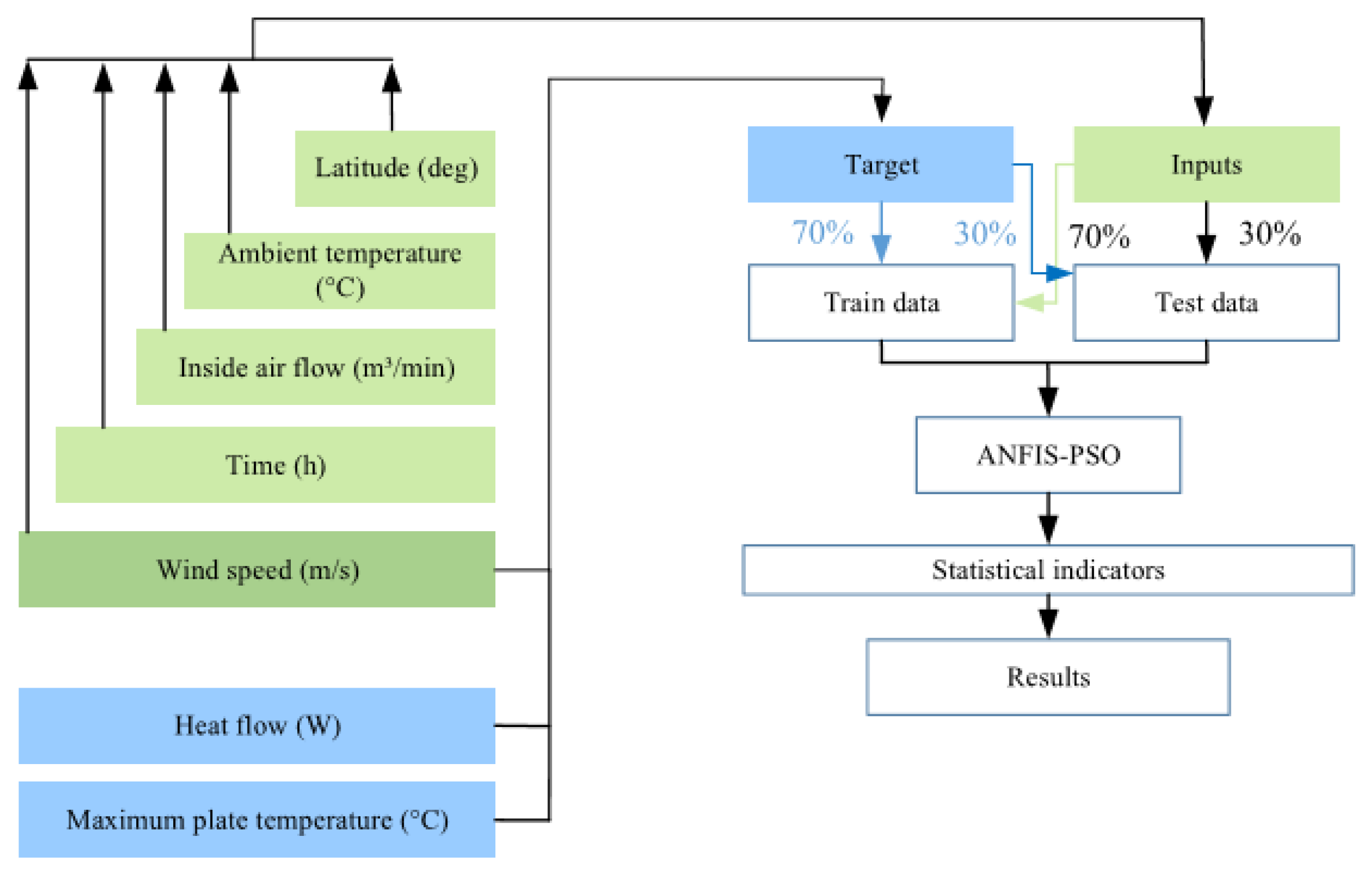

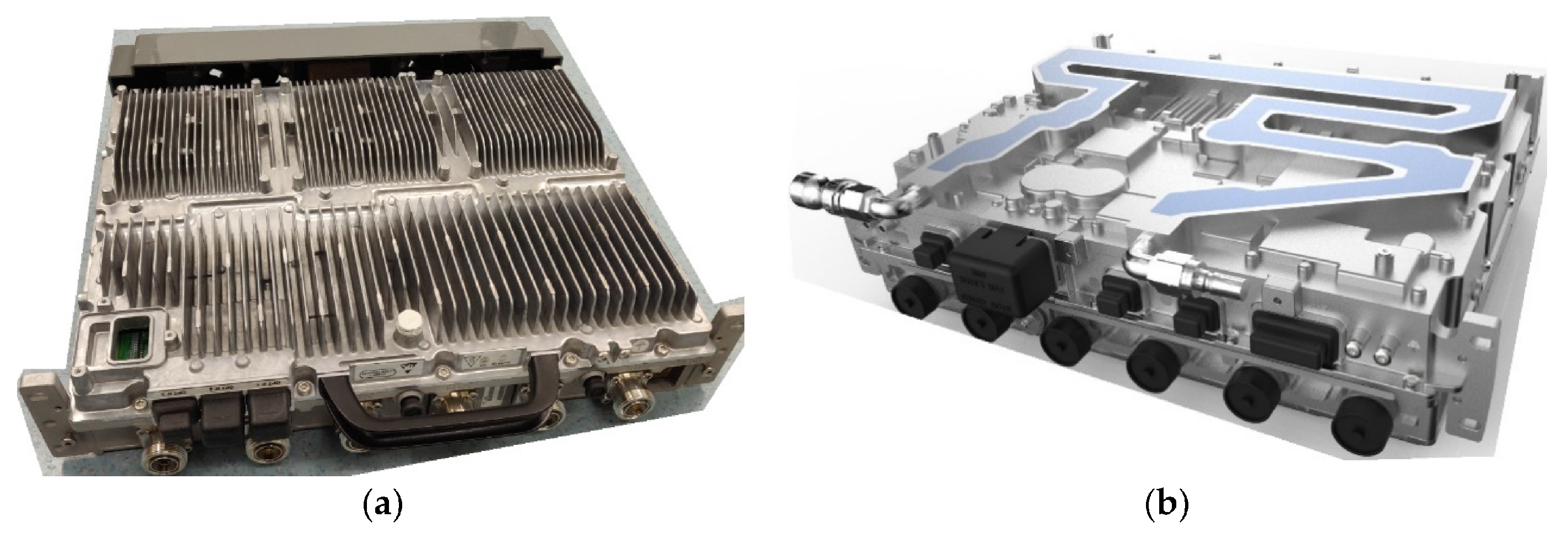
Disclaimer/Publisher’s Note: The statements, opinions and data contained in all publications are solely those of the individual author(s) and contributor(s) and not of MDPI and/or the editor(s). MDPI and/or the editor(s) disclaim responsibility for any injury to people or property resulting from any ideas, methods, instructions or products referred to in the content. |
© 2025 by the authors. Licensee MDPI, Basel, Switzerland. This article is an open access article distributed under the terms and conditions of the Creative Commons Attribution (CC BY) license (https://creativecommons.org/licenses/by/4.0/).
Share and Cite
Dbouk, T.; Mourad, O. A Review on Thermal Management and Heat Dissipation Strategies for 5G and 6G Base Stations: Challenges and Solutions. Energies 2025, 18, 1355. https://doi.org/10.3390/en18061355
Dbouk T, Mourad O. A Review on Thermal Management and Heat Dissipation Strategies for 5G and 6G Base Stations: Challenges and Solutions. Energies. 2025; 18(6):1355. https://doi.org/10.3390/en18061355
Chicago/Turabian StyleDbouk, Talib, and Oumar Mourad. 2025. "A Review on Thermal Management and Heat Dissipation Strategies for 5G and 6G Base Stations: Challenges and Solutions" Energies 18, no. 6: 1355. https://doi.org/10.3390/en18061355
APA StyleDbouk, T., & Mourad, O. (2025). A Review on Thermal Management and Heat Dissipation Strategies for 5G and 6G Base Stations: Challenges and Solutions. Energies, 18(6), 1355. https://doi.org/10.3390/en18061355






